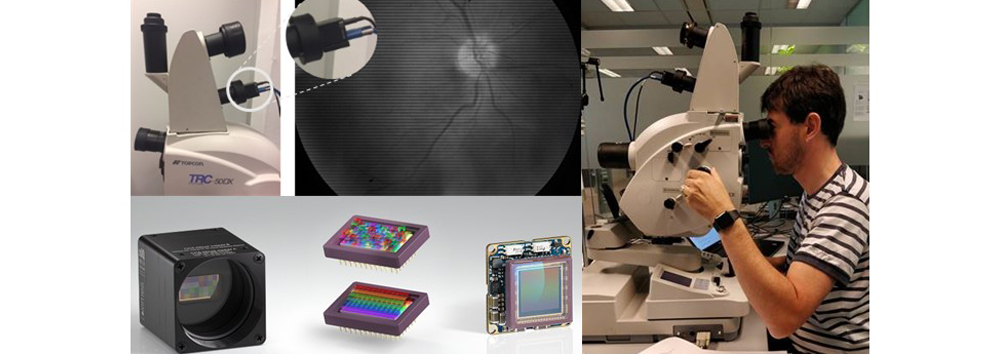©HERALD
What has the ATTRACT seed funding enabled you to do so far?
We developed a hyperspectral retinal imaging setup that can be used in clinical studies to identify patients at risk of developing Alzheimer’s disease (AD). The aim of the project is to quantify beta-amyloid in the retina as a proxy for beta-amyloid in the brain. Early-stage diagnosis by non-invasive imaging of the retina is envisioned to become highly valuable in the quest for more effective AD treatments, and could be a tool for population-level AD screening in the long run. We used our setup in a study on 40+ subjects, consisting of both AD patients and cognitive normal elderly. The collected retinal hyperspectral data was used to train a model to distinguish between patients and controls, with promising results that confirm the potential of hyperspectral retinal imaging as a tool for AD diagnosis. The results are currently being wrapped up for publication in a high-impact medical journal.
What challenges have you faced so far?
The snapshot hyperspectral imaging hardware that we use had not been used for retinal imaging before, and we had to overcome a series of technical hurdles to come to a setup that produces reliable and reproducible images. This includes mounting the hyperspectral camera to a conventional retina camera, experimenting with different lenses, finding optimal settings for flash intensity and exposure time, and so on. After obtaining a stable setup, we successfully acquired hyperspectral images of 40+ subjects. Obtaining insights from these images was second major challenge, as we have a large amount of data for each individual subject (a 272×512 image in 14 wavelengths) and only few labelled subjects. With careful data preprocessing and modelling, we developed a computer model to differentiate AD patients from controls.
Where does your ATTRACT journey go from here?
Our results from the proof-of-concept study are promising but need to be confirmed on a significantly larger sample. Imaging a larger number of both AD patients and healthy controls will help us to understand the capabilities of the current model, as well as to further improve it. A large-scale study would elucidate the strengths and limitations of the current approach, and help us to find out whether hyperspectral imaging can live up to its promise on being a valuable marker for Alzheimer’s disease. Retinal imaging in AD animal models can help to underpin mechanistically the hyperspectral data. In situ tissue staining and ELISA assays can quantify different forms and concentrations of beta-amyloid protein fractions, which are considered hallmark proteins on the trajectory of AD development. Results from the biochemical assays can be correlated to hyperspectral data to uncover the specificity of the novel imaging technique.
Sum up in two sentences the advantages of the ATTRACT Programme over other research funding schemes.
The ATTRACT grant application procedure is lightweight and ideal for submitting innovative and high(er) risk ideas. The turn-around time in the application process was fast and allowed an agile approach. The amount of funding vs. project time is well-balanced for developing a proof-of-concept. The prospect of a 2-stage approach for a applying for a larger project is attractive and allows to develop a larger ambition building on initial positive proof-of-concept results.
For more information
Visit the HERALD project site.


